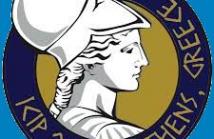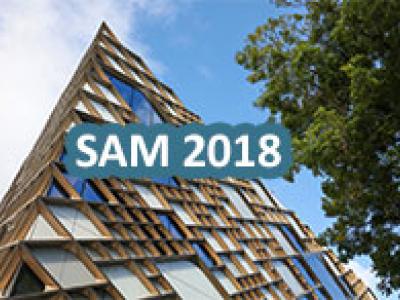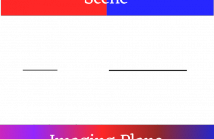- Image/Video Storage, Retrieval
- Image/Video Processing
- Image/Video Coding
- Image Scanning, Display, and Printing
- Image Formation

- Read more about MULTI-THRESHOLD LIP CONTOUR DETECTION
- Log in to post comments
In this work, we propose a novel, multi-threshold method for lip contour extraction from high-resolution static lip images acquired in an uncontrolled environment and emphasizing on the contour details.
The introduced method is a “Divide and conquer” approach. We broke the problem of lip contour extraction into two base sub-problems of locating the upper and lower lip contours using a novel threshold selection algorithm and combining them into the solution for the original lip contour.
- Categories:
 16 Views
16 Views
- Read more about Near-Constant Time Bilateral Filter for High-Dimensional Images
- Log in to post comments
- Categories:
 7 Views
7 Views
This paper presents a method for stabilizing both cylindrical and spherical panorama videos with a 360-degree field of view. We observe that rotation needs to be extremely smooth for 360 videos to maintain global motion coherency and avoid wobbling. Our method decouples the rotation from other motions and applies different strategies for smoothing them. The proposed approach is 2.5D as it estimates 3D rotations without involving 3D structure-from-motion methods. Therefore, it is more robust and can be performed in an incremental way.
- Categories:
 43 Views
43 Views
- Read more about GENERATING A PERSPECTIVE IMAGE FROM A PANORAMIC IMAGE BY THE SWUNG-TO-CYLINDER PROJECTION
- Log in to post comments
This paper proposes a swung-to-cylinder projection model for mapping a sphere to a plane. It can be used to create a semi-perspective image from a panoramic image. The model has two steps. In the first step, the sphere is projected onto a swung surface constructed by a circular profile and a rounded rectangular trajectory. In the second step, the projected image on the swung surface is mapped onto a cylinder through the perspective projection. We also propose methods for automatically determining proper parameters for the projection model based on image content.
- Categories:
 9 Views
9 Views
- Read more about Estimation of the regularization parameter of an on-line NMF with minimum volume constraint
- Log in to post comments
- Categories:
 12 Views
12 Views
- Read more about RCDFNN: Robust Change Detection based on Convolutional Fusion Neural Network
- Log in to post comments
Video change detection, which plays an important role in computer vision, is far from being well resolved due to the complexity of diverse scenes in real world. Most of the current methods are designed based on hand-crafted features and perform well in some certain scenes but may fail on others. This paper puts up forward a deep learning based method to automatically fuse multiple basic detections into an optimal
- Categories:
 34 Views
34 Views
- Read more about Deep Blind Image Quality Assessment by Learning Sensitivity Map
- Log in to post comments
Applying a deep convolutional neural network CNN to no reference image quality assessment (NR-IQA) is a challenging task due to the lack of a training database. In this paper, we propose a CNN-based NR-IQA framework that can effectively solve this problem. The proposed method–the Deep Blind image Quality Assessment predictor (DeepBQA)– adopts two-step training stages to avoid overfitting. In the first stage, a ground-truth objective error map is generated and used as a proxy training target.
- Categories:
 41 Views
41 Views
- Read more about Analysis and Optimization of Aperture Design in Computational Imaging
- Log in to post comments
There is growing interest in the use of coded aperture imaging systems for a variety of applications. Using an analysis framework based on mutual information, we examine the fundamental limits of such systems—and the associated optimum aperture coding—under simple but meaningful propagation and sensor models. Among other results, we show that when SNR is high and thermal noise dominates shot noise, spectrally-flat masks, which have 50% transmissivity, are optimal, but that when shot noise dominates thermal noise, randomly generated masks with lower transmissivity offer greater performance.
- Categories:
 14 Views
14 Views
- Read more about RECOGNIZING MINIMAL FACIAL SKETCH BY GENERATING PHOTOREALISTIC FACES WITH THE GUIDANCE OF DESCRIPTIVE ATTRIBUTES
- Log in to post comments
Cross-modal sketch-photo recognition is of vital importance
in law enforcement and public security. Most existing methods
are dedicated to bridging the gap between the low-level
visual features of sketches and photo images, which is limited
due to intrinsic differences in pixel values. In this paper, based
on the intuition that sketches and photo images are highly correlated
in the semantic domain, we propose to jointly utilize
the low-level visual features and high-level facial attributes to
xiao_yang.pdf
- Categories:
 10 Views
10 Views